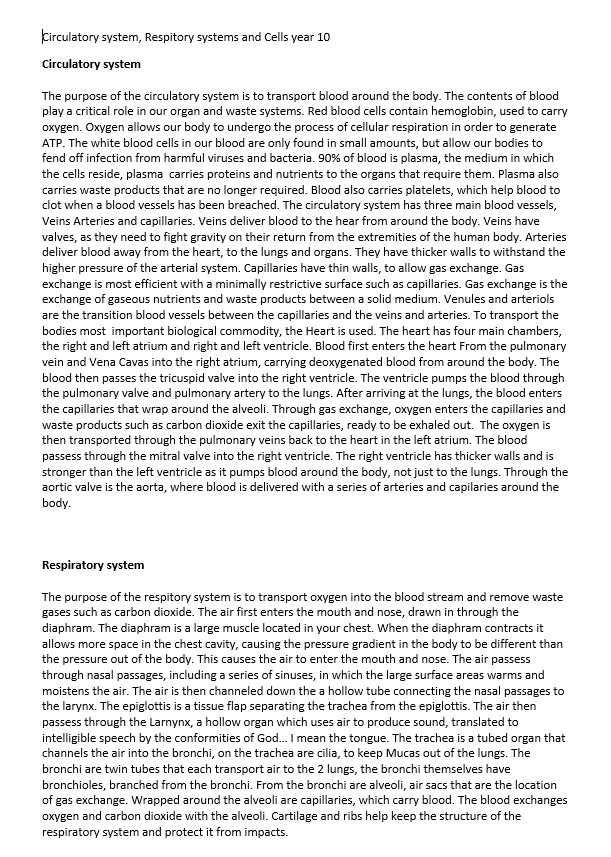Circulatory, Respiratory Systems, and Cells for Year 9/10
Summary:
This is an overview of the Circulatory, Respiratory Systems, and Cells for Year 9/10 students. The Circulatory system is responsible for transporting blood around the body, delivering oxygen to organs, and removing waste products. The Respiratory system is responsible for breathing and transferring oxygen into the bloodstream while removing waste gases such as carbon dioxide. The Digestive system is responsible for converting edible substances into nutrients that can be used to create energy and restore vital body systems. Cells are the building blocks of all living organisms and come in two types, prokaryotic and eukaryotic, each with unique characteristics and functions.
Excerpt:
Circulatory, Respiratory Systems and Cells for Year 9/10
Circulatory System
The purpose of the circulatory system is to transport blood around the body. The contents of blood play a critical role in our organs and waste systems. Red blood cells contain hemoglobin, used to carry oxygen. Oxygen allows our body to undergo the process of cellular respiration in order to generate ATP. The white blood cells in our blood are only found in small amounts, but allow our bodies to fend off infection from harmful viruses and bacteria. 90% of blood is plasma, the medium in which the cells reside, plasma carries proteins and nutrients to the organs that require them. Plasma also carries waste products that are no longer required. Blood also carries platelets, which help the blood to clot when a blood vessel has been breached. The circulatory system has three main blood vessels, Veins Arteries, and capillaries. Veins deliver blood to the heart from around the body. Veins have valves, as they need to fight gravity on their return from the extremities of the human body. Arteries deliver blood away from the heart, to the lungs and organs. They have thicker walls to withstand the higher pressure of the arterial system. Capillaries have thin walls, to allow gas exchange. Gas exchange is most efficient with a minimally restrictive surface such as capillaries.


Reviews